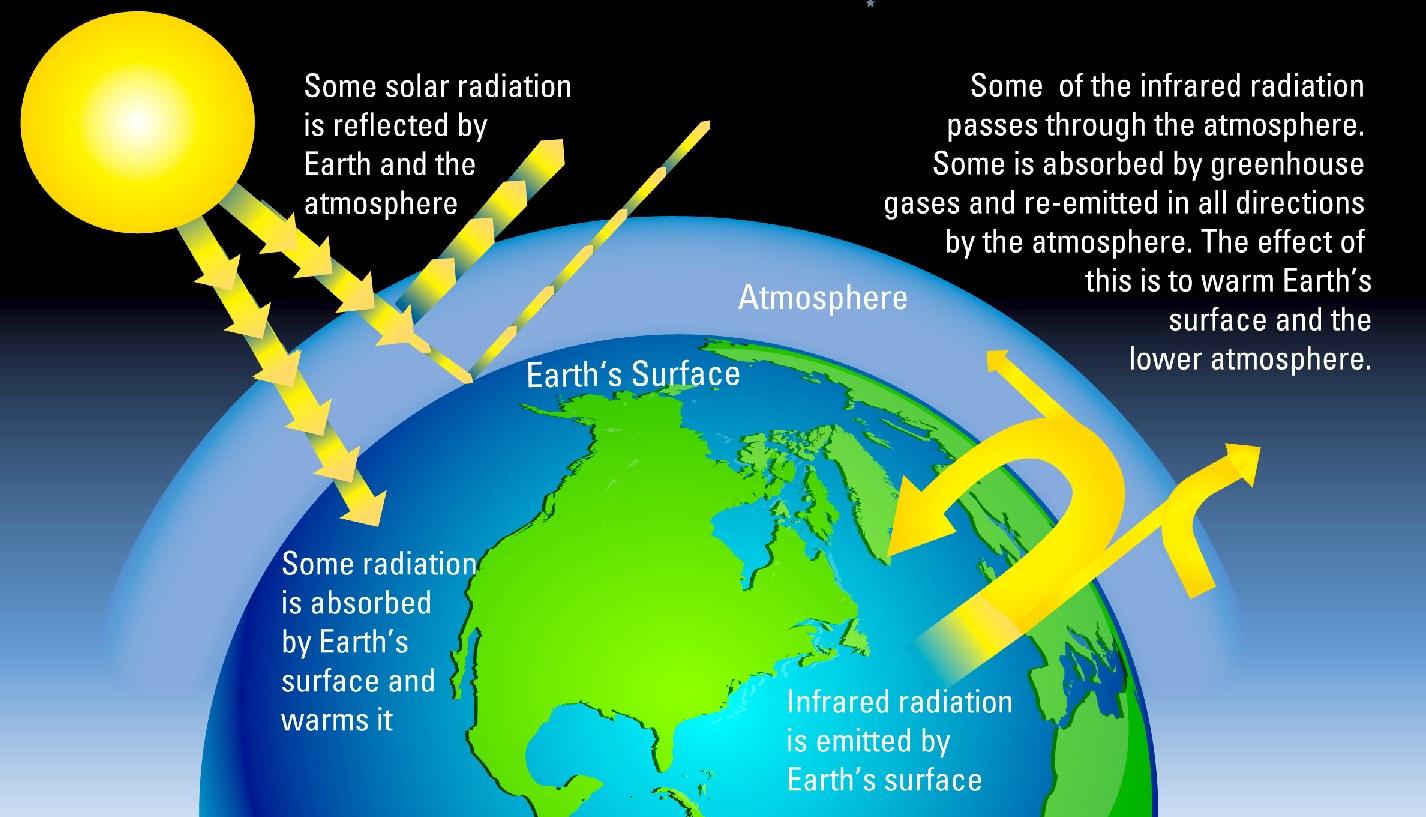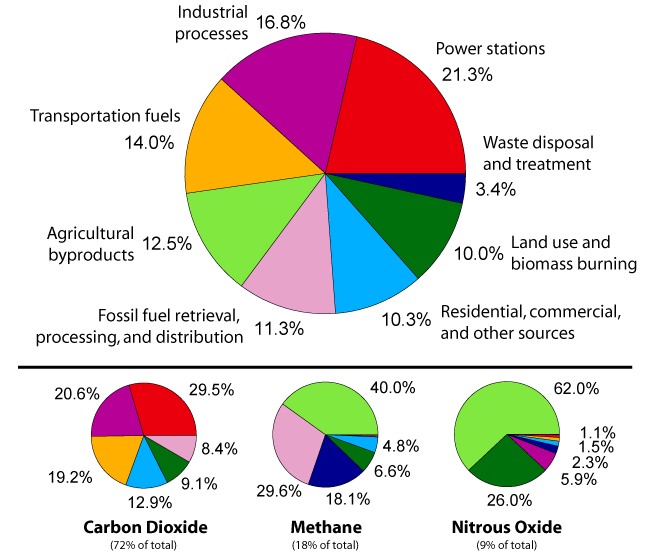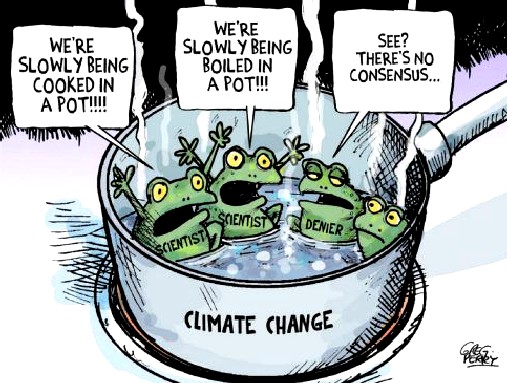|
NITROGEN DIOXIDE
Pleas use our A-Z INDEX to navigate this site
JUST LIKE A GLASS BOWL - Radiation from the sun would be reflected out into space, but with more greenhouse gases in the atmosphere some radiated heat is absorbed and re-emitted back to earth just as if we lived in a greenhouse.
By far the biggest contributor to global warming after water vapour, is Carbon Dioxide. We cannot do much about water vapour where around 71% of the Earth's surface is water. But, the rate of evaporation is dependent on temperature, hence the other gases that contribute to the glass-like bubble we live in are very important.
Human activities such as agriculture, fuel combustion, wastewater management, and industrial processes are increasing the amount of nitrogen dioxide in the atmosphere.
COMMON CONFUSION
Nitrogen makes up 78% of the Earths atmosphere and is an inert gas which is colourless, odourless and tasteless. It is commonly used in the beverage industry in beer, wine and juice production. The gas is predominantly used to prevent oxidation which can affect the taste and quality of the beverage and is also used to dispense beer. In this form Nitrogen works for us.
There seems to be confusion over the difference between nitrogen and
nitrous oxide (N2O), more commonly known as laughing gas.
This is a misconception, as although they both contain the element
nitrogen, they are two different gases.
N2O
- Formula : 2 Molecules of Nitrogen with 1 Molecule of Oxygen.
The major source of nitrogen dioxide
is the burning of fossil fuels:
coal, oil and
gas. Most of the nitrogen dioxide in cities comes from motor vehicle exhaust (about 80%). Other sources of nitrogen dioxide are petrol and metal refining, electricity generation from coal-fired power stations, other manufacturing industries and food processing.
Nitrogen dioxide is an important air pollutant because it contributes to the formation of photochemical smog, which can have significant impacts on human health.
GREENHOUSE GASES
The major greenhouse gases are water vapour, which causes about 3670% of the greenhouse effect; carbon dioxide (CO2), which causes 926%; methane (CH4), which causes 49%; nitrous oxide (N2O) that accounts for about 5.6 percent of greenhouse gas emissions from human activities and ozone (O3), which causes 37%.
THE CAUSES IN SECTORS - Transportation and energy for living are the main causes of greenhouse gas build up in the atmosphere as carbon dioxide and nitrous oxides, with agriculture loading us with methane and more nitrous oxides. Hence, we need to revise our eating habits and switch to renewable energy for our cars and industry as quickly as possible.
The greenhouse effect is the process by which absorption and emission of infrared radiation by gases in a planet's atmosphere, warm its lower atmosphere and surface, to include warming the oceans and melting the ice caps.
LINKS & REFERENCE
https://www.environment.gov.au/atmosphere/airquality/publications/standards.html
Pleas use our A-Z INDEX to navigate this site
This website is provided on a free basis as a public information service. copyright © Climate Change Trust 2019. Solar Studios, BN271RF, United Kingdom.
|



